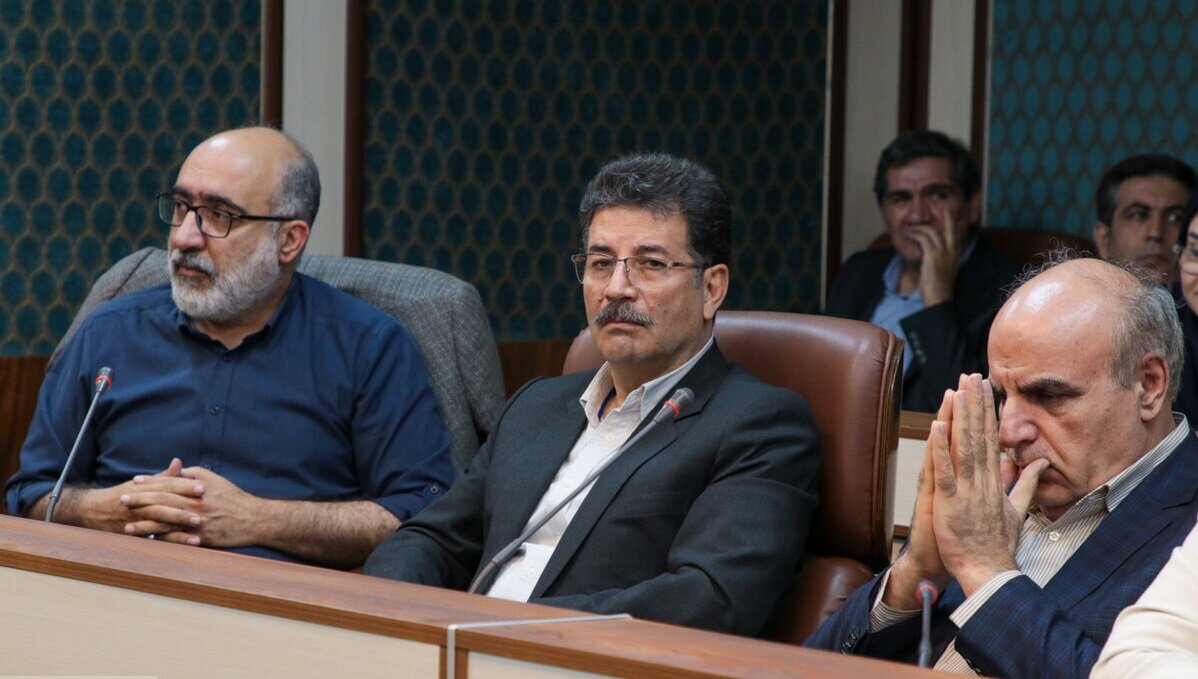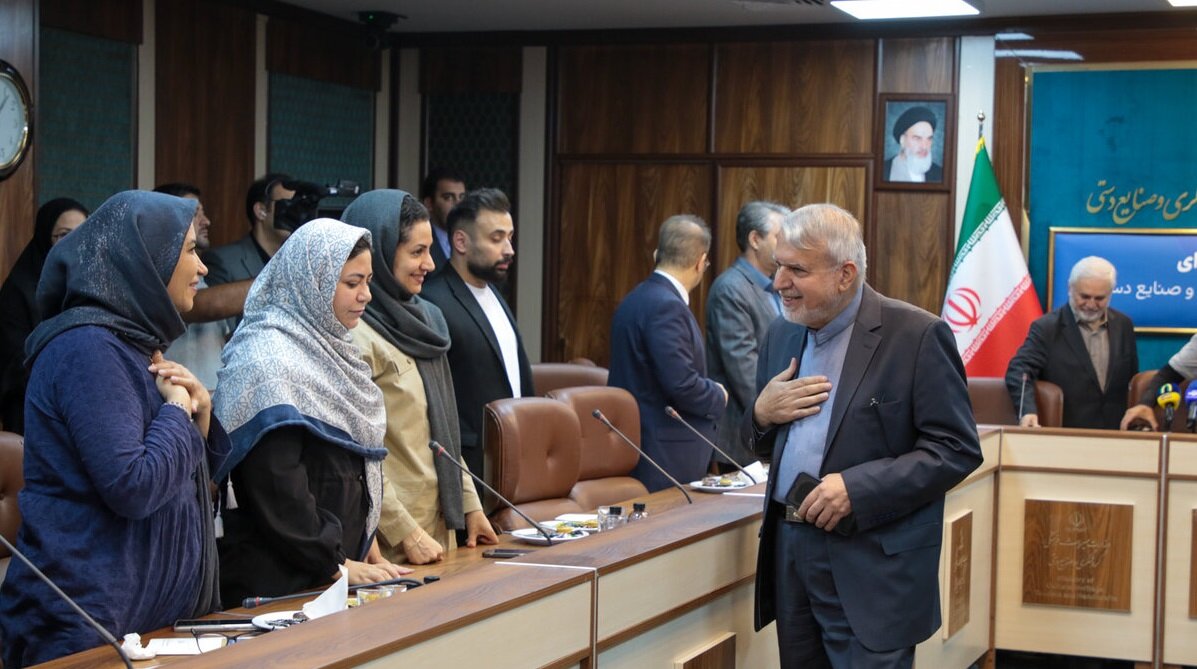Minister outlines visa-free travel agreements, cultural initiatives, and infrastructure plans

TEHRAN – Iran’s Minister of Cultural Heritage, Tourism, and Handicrafts, Seyyed Reza Salehi-Amiri, unveiled a series of major developments in regional tourism cooperation, heritage protection, and tourism infrastructure during a press conference held on Tuesday at the ministry headquarters in Tehran.
Salehi-Amiri announced that Iran has discussed potential agreements with several neighboring countries including Azerbaijan, Tajikistan, Armenia, Uzbekistan, and Georgia to ease or remove visa requirements for travelers. The move is part of a broader strategy to attract more foreign tourists and deepen regional ties through tourism diplomacy.
Expanded regional travel partnerships
“We have entered a new phase of diplomatic engagement to boost tourism,” the minister said, adding that the initiative began with Tajikistan, which now enjoys visa-free access to Iran.
Direct flights have resumed, allowing Tajik nationals to travel beyond Mashhad to other Iranian destinations, the minister said.
"Relations with Azerbaijan, once strained due to past diplomatic tensions, have also improved."
Salehi-Amiri reported a rebound in Azerbaijani tourist numbers, growing from a low of approximately 1,000 to 22,000 visitors in the past year. “Our target is to restore the previous volume of 1.7 million tourists,” he noted, highlighting renewed presidential-level engagement and recent agreements on reopening borders and expanding flight routes.
"Further negotiations with Armenia, Uzbekistan, and Georgia are progressing, with an emphasis on opening land routes to facilitate seamless travel within the region."
Salehi-Amiri expressed hope that a visa-free corridor among neighboring countries would be fully realized soon.
Strategic engagement with Turkey, Iraq, and Egypt
The minister also discussed plans to balance the flow of Iranian tourists to Turkey--currently at 3.5 million annually--by encouraging a similar number of Turkish visitors to Iran. “We’ve initiated a new chapter in tourism relations with Turkey and are working closely with its tourism ministry,” he said.
Regarding Iraq, Salehi-Amiri highlighted mutual historical ties and a shared cultural heritage, especially in the so-called “Sassanid Corridor (a series of Persian mounuments of Sassanid era that are streached from Iran to modern-day Iraq.” With 3.5 million Iranians and 3,600 Iraqis traveling between the two countries annually, there are plans to raise the total to five million.
Turning to Egypt, the minister described recent diplomatic overtures aimed at restoring tourism ties. He cited strong interest among Egyptian intellectuals in strengthening bilateral relations and said both countries’ leaderships are aligned on reopening the travel corridor. “There are some obstacles, but they are surmountable,” he said, stressing that no major barrier remains to Iran-Egypt tourism cooperation.

Broader international outreach
China, Malaysia, Indonesia, and Russia were also identified as priority markets. Salehi-Amiri noted the relatively low number of Chinese tourists visiting Iran, calling it “unacceptable” given China’s projected 200 million outbound travelers by 2030. He emphasized Iran’s intention to capture a larger share of this market.
Cultural projects and heritage preservation
On the domestic front, Salehi-Amiri addressed concerns about the reported damage to the ancient site of Konar Sandal, a 5,000-year-old archaeological area in the Jiroft region, southeastern Iran. He provided assurances that preservation efforts are ongoing.
The minister added that a place in Tehran’s Sa’dabad complex will be repurposed into a Quran museum. According to Salehi-Amiri, the previous location of the Quran museum was not reachable to many potential visitors so that it was decided for a re-location.
Infrastructure and investment initiatives
The minister outlined steps to encourage private sector investment by divesting operational roles from the ministry. The Laleh Hotel Group, formerly under ministry management, will be privatized. “Our role will be policy-making, support, and oversight--not direct management,” he explained.
In line with expanding health tourism, a new agreement between the ministries of labor, health, and tourism is being finalized and will be signed soon. He also highlighted an upcoming international conference on health tourism in Hamedan as a key milestone.
Elsewhere in his remarks, the minister announced a new policy allowing the development of tourism facilities near dams, rivers, and water sources under the environmental regulations.
Blue tourism and cruise development
Salehi-Amiri revealed that Iran is actively developing its blue tourism sector, identifying 224 coastal sites suitable for tourism infrastructure.
For example, the first cruise ship--acquired by the private sector from Kazakhstan--has arrived in the port of Neka of the Caspian Sea. With 1,300 rooms, it marks a significant step toward realizing Iran’s sea-based tourism potential.

Support for tourism and handicrafts professionals
Efforts are also underway to extend insurance coverage to artisans and tour guides, as well as to reduce taxes on tourism-related businesses. Local governments are expected to grant up to 80% tax exemption for building hotels under new agreements.
The minister concluded by reaffirming the government's policy of decentralization, granting more authority to provincial offices and professional associations to implement and oversee tourism development.
“We are aiming for 15 million annual tourists and over $15 billion in revenue by the end of Iran’s Seventh National Development Plan,” Salehi-Amiri said.
AM
Leave a Comment